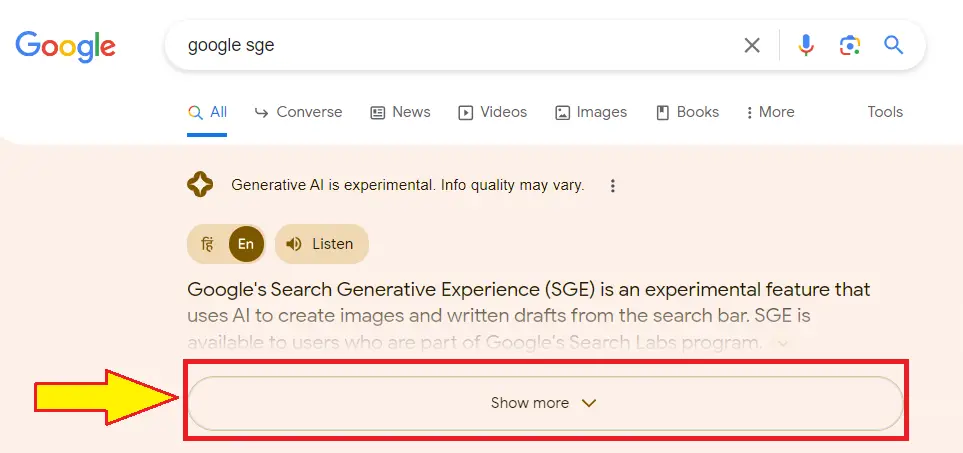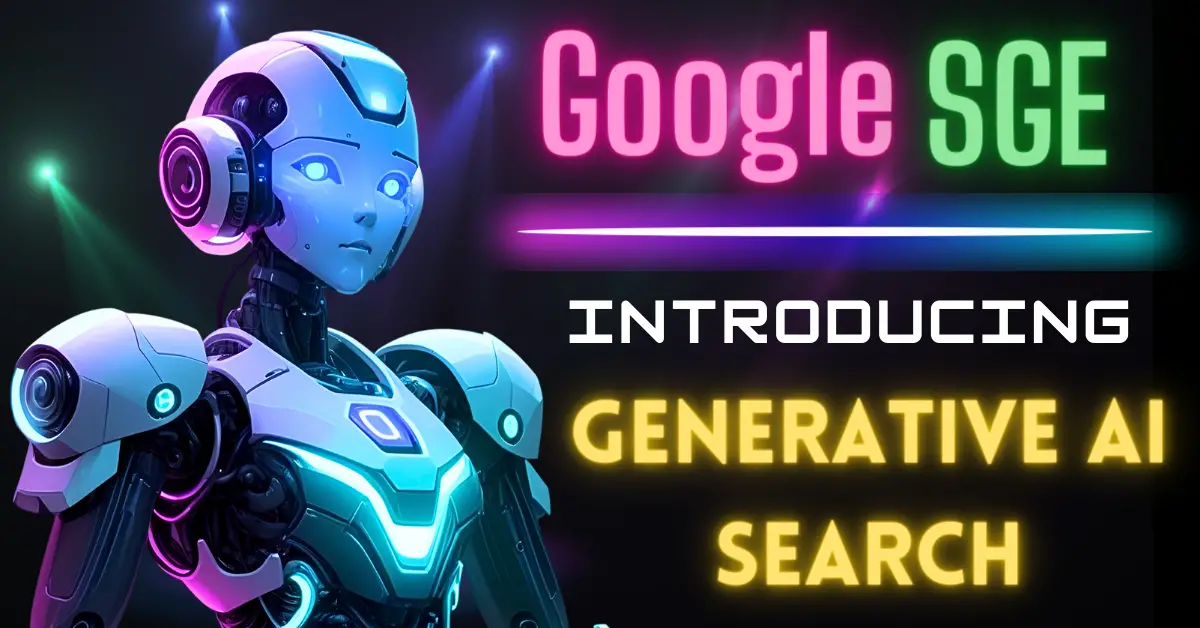Today in this insightful discussion about Google’s latest feature – Search Generative Experience (SGE). Google is always evolving, and with the early access release of SGE, it’s introducing a search experience that’s quite different from what we’re used to.
In this article, we will break down the mechanics, take a closer look at how AI-generated answers are impacting search results, and discuss the implications for SEO.
What is Google SGE?
Google SGE, or Search Generative Experience is a new search feature by Google that uses generative AI to provide direct answers to user queries without the need to click on websites. It can potentially change the way search results are presented and impact SEO.

Google SGE Working:
One of the key aspects of SGE that wasn’t thoroughly explained during Google I/O is the mechanics behind it.
Here are the details:
- When you enter a search query, it takes 8 to 12 seconds for AI-generated results to appear.
- A small blinking box appears during this time, offering users the choice to wait for the AI answer or click on a website.
- Scrolling down hides the AI-generated results, allowing users to focus on the organic search results.
- Google is also experimenting with a two-step mechanic, where users can choose to generate AI answers on-demand.
This dynamic approach empowers users to decide whether they prefer AI-generated answers or traditional web results based on their needs and interests.
AI Answers Are Cut Short
AI answers generated in SGE often feature a “show more” button, particularly when browsing on a larger screen.

Google’s decision to display the first result regardless of the browser’s size reminds users that they can access website results by scrolling down.
AI-Generated Content for All Queries?
Users can access additional AI-generated content by clicking the “show more” button, while always having the option to scroll down for website results.
However, not all queries generate AI answers. Google is cautious especially with Your Money or Your Life (YMYL) queries, and sometimes, specific queries receive no AI-generated response.
AI Answers vs Featured Snippets
Additionally, SGE retains the presence of featured snippets and “People Also Ask” sections in its search results. This, however, can lead to redundancy in the search results, where AI-generated answers often resemble the content from featured snippets.
In some cases, the AI answer may offer contradictory information due to content being sourced from various places.
The challenge here is ensuring that AI-generated content remains accurate and relevant.
Google Search Generative Experience Source Linking
One notable issue with AI-generated answers is the lack of content attribution and source linking. In some cases, AI-generated answers replicate content from websites without providing any attribution or external links.

AI-generated answers may not provide attribution or source links, potentially posing issues related to content ownership.
Good News for Small Publishers
A positive development for small publishers is that the sources featured in AI answers often differ from the top-ranking sites.
This could provide a great opportunity for smaller publishers to gain visibility and compete with larger, more established sites for certain queries.
Link Outs?
A curious aspect of AI-generated answers is that they rarely link out to the source. This can be frustrating for users who want to explore further.
However, Google does an excellent job of linking out when it comes to product-related queries, enhancing the user’s shopping experience.
The New Conversation Mode
The new conversation mode in SGE allows users to ask follow-up questions. However, this feature currently lacks the depth of engagement found in chatbots.

Users will typically achieve better results by returning to the search bar for follow-up queries.
Redesigned SERPs
The most visually noticeable change in SGE is the redesign of Search Engine Results Pages (SERPs). These changes include:
- The addition of favicons alongside search results, emphasizes branding.
- Increased spacing between results, making SERPs appear less crowded.
- Expanded search results take up more vertical space on the page.
- An infinite scroll design, eliminating the need for pagination.
- A change in the color of title tags from blue to black, possibly impacting click-through rates.
User Intent and the Future of SEO
While the introduction of SGE may lead to a redistribution of traffic, SEO remains a crucial strategy for online success. The power of SEO lies not only in the volume of traffic it can deliver but also in the high intent of visitors.
Users who actively search for specific queries are more likely to convert and engage with content.
SEO remains a powerful strategy, driven by the high intent of users actively searching for specific information.
Final Thoughts on Google Search Generative Experience
In conclusion, while the introduction of Google’s SGE may lead to changes in search traffic distribution, SEO remains a powerful tool for reaching users with high intent. The intent of users who initiate a search is often stronger than that of those casually browsing social media or other platforms.
SEO professionals and website owners should stay updated with these developments and adapt their strategies accordingly. The focus should remain on providing valuable, in-depth content that AI-generated answers cannot replace.
As the SGE feature continues to evolve, we can expect both challenges and opportunities in the world of SEO. SEO is here to stay, and it will continue to be a critical component of online marketing strategies.
If you found this breakdown of Google SGE enlightening, Keep exploring the latest AI Tutorials.
- Cybersecurity Cyber Security: Spelling and Industry Standards
- Why PDFs Became Unopenable in Foxit PDF Editor After a Windows Update — And How One User Restored Default File Association to Fix It
- Viper V3 Pro Wireless Dongle Not Connecting? Fix It
- Top 6 Firmware & Driver Downloader Tools That IT Teams Use to Collect Device Images and Maintain Offline Update Repositories




